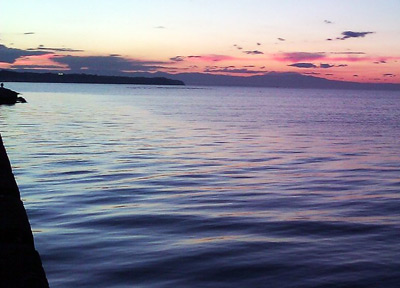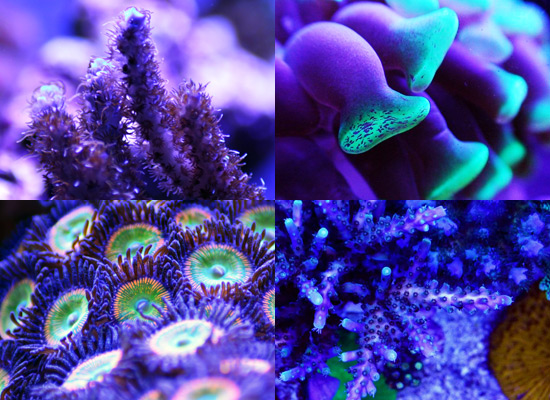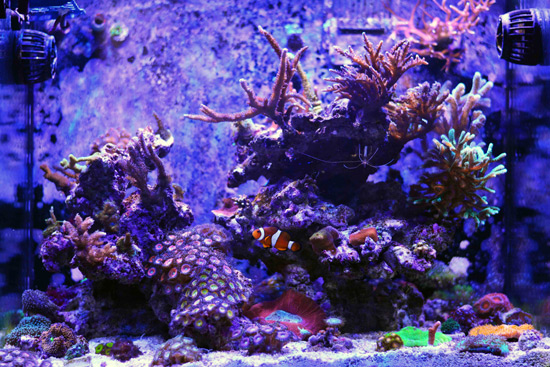We recently published an article about the challenges of collecting natural sea water (NSW) for your marine aquarium. In that week’s Saltwater Smarts newsletter, we asked any readers who used NSW in their aquarium to tell us about their experience. Alex Stamb, a physician from Greece, was one of the folks who answered our call, so we would like to introduce you to this aquarist and his system.
The Aquarist
Alex resides in Thessaloniki, Greece, which is situated on the northern shores of the Thermaic Gulf on the Aegean Sea (part of the Mediterranean Sea). As a 12-year veteran of the saltwater aquarium hobby, he has enjoyed learning about reef aquariums, growing a variety of corals, and tackling various DIY projects.
Aquarium & Equipment
The heart of Alex’s system is a Red Sea Max 130 (34 gallons). The rest of the equipment list is as follows:
- DIY overflow
- Sump
- SWC 120 protein skimmer
- (2) VorTech MP10’s
- DIY auto top off
- DIY LED lighting
- Eheim 2000+ pump
- ATS dosing pump
NSW Collection & Preparation
 In performing weekly NSW changes for the last year, Alex has tried many collection sites throughout the Chalkidiki peninsula, but he settled on a location in Nei Epivates due to its close proximity (shown on right).
In performing weekly NSW changes for the last year, Alex has tried many collection sites throughout the Chalkidiki peninsula, but he settled on a location in Nei Epivates due to its close proximity (shown on right).
After collecting the water, some prep work is needed to prepare it for his aquarium. This includes:
- Adjusting specific gravity with RO/DI water (the SG of the water he collects is 1.029)
- Raise the temperature
- Add magnesium sulfate, calcium chloride, and trace elements
For Alex, the collection of NSW began as an experiment to reduce the costs of keeping a saltwater aquarium. We’d say it has been a success, as he has spent less than $50 in the last year on water-related needs. Add to that the growth and health of the corals in his aquarium, and it sounds like he has found a winning formula!
The Inhabitants

The first thing you’ll notice about this aquarium is the variety of SPS, LPS, zoanthids, and soft corals. With Alex’s desire to promote a sustainable hobby, his current corals were grown from small frags he sourced from local reefers, with the exception of the sole wild-collected specimen (Scolymnia australis).
 This coral-heavy nano is also home to a tank-bred pair of ocellaris clownfish (Amphiprion ocellaris), scarlet skunk cleaner shrimp (Lysmata amboinensis), and a whole mess of Nassarius and Trochus snails.
This coral-heavy nano is also home to a tank-bred pair of ocellaris clownfish (Amphiprion ocellaris), scarlet skunk cleaner shrimp (Lysmata amboinensis), and a whole mess of Nassarius and Trochus snails.
Final Notes
Alex’s piece of advice to anyone interested in trying natural sea water: “Don’t collect at a sandy beach to avoid the heightened presence of human pathogens in the water.”
Alex would like to send regards and respect to aquarists all around the world for their inspiration and support. He considers this aquarium a tribute to Salonica Reef Maniacs (his local reef club) and would like to send special thanks to his photographer Giannis (Giovanni), Glazar, Vrilo (SPS), Larry (the Dentist), Nervas (the Wizard), and his beloved wife for her patience and support.
It’s always nice to see aquarists stepping outside the norm, and Alex’s nano is a fine example of successfully operating a system with natural sea water!
Photo Credits: Giovanni




Excellent Alex!One of the best nano out there!
Keep it going bud,we are always here to help you and be helped from you!
Larry you are the man!
I `m looking farward for a trip to Kozani to see your new 2T beast running!
Thanks for your kind words!
Awesome tank Alex! Do you have any allelopathy issues with the coral mix you have? Are you taking any special precautions? If no to both of the above do you think starting with small frags was a factor? Thanks for sharing,
Matt
Matt thank you for your kind words.
Allelochemical warfare is very common in nature too.Huge areas of SPS colonies and no LPS and vice versa.Also a very popular subject for discussion between hobbysts.Coral origins come from so many different places,so in fact it is very difficult to make safety zones between them.You can never know if there is any compatibility in corals when you buy them.Even zoanthous can kill each other.In some cases hibridism was reported that lead to new species.
Strong circulation,strong skimming,fast nutrient export,and probably GAC,is the key for less toxicity in a reef tank.
I like domesticated corals that proven strong over time in captivity and lead fast to amazing colors,I prefer small fragments growing strong.
But this is the paradox of keeping a mixed reef tank.All this is just my opinion and sorry for any mistakes and brutalism in English language.
Cheers!
Giannis thank you very much.
I would like to thank personally Chris Aldrich for the review about me and my nano on Saltwatersmarts.com It is a big honor for me.
My greetings and respect to all salwater smarts community worldwide!
It was my pleasure, Alex! Thanks for writing us about your tank. I enjoyed learning about it and showcasing it for the community. Happy reefing!
Alex, its been a pleasure for me shooting your incredible nano!
I think in the next few months your corals will need a new-bigger home.. so, Keep Reefing!